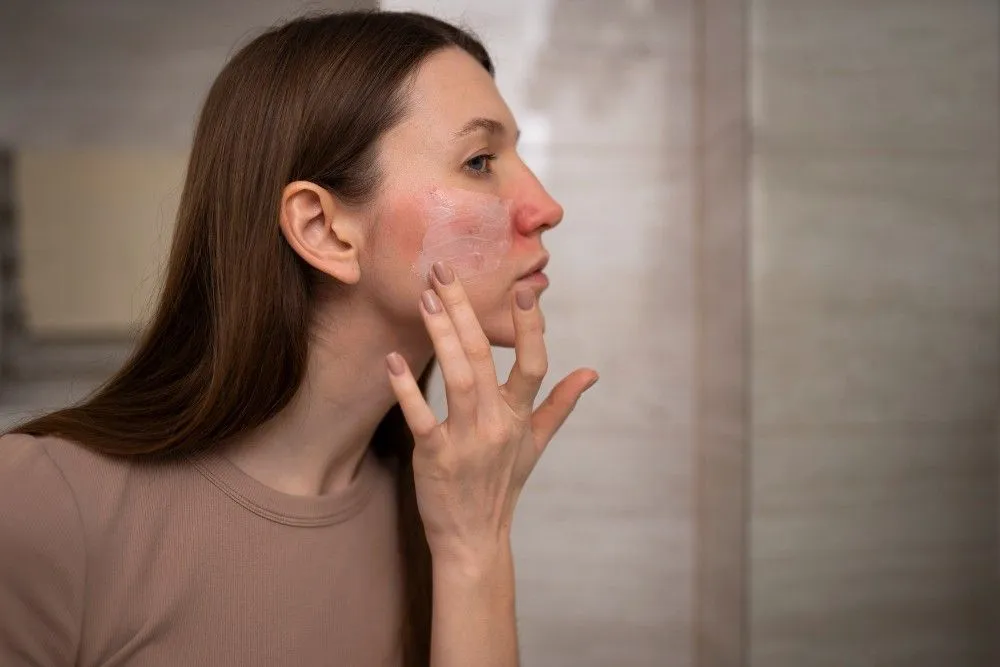Skin fungus is an irritating condition of the skin that can result in itchy red, rashy, and scaly skin that can be difficult to tolerate. You should not think that fungal fungus are not dangerous. They can harm you if they penetrate deep into the skin and can result in deep scars, flakiness and constant itching. No need to worry, they can be treated with cream, and if you want to get rid of repeated fungal fungus, then you get in touch with a healthcare provider to prevent fungal fungus from returning. In this blog, we will focus on "Skin fungus: Causes, Symptoms, Treatments and Preventions?"
What is skin fungus?
The skin fungus is a tiny organism that can cause mold and mildew. Fungi can grow everywhere, in the air and water or even on humans, the fungi are not always harmful. The fungi species that causes skin fungus is the harmful one and these can cause a fungal infection that runs deep into the skin. Sometimes, these fungal infections can cause itchiness and redness. Other times they can heal on their own and leave the skin without the need for medications.
Who can get a skin fungus?
Anyone can develop a skin fungus as these fungi are present in the atmosphere and can be present on the upper layer of the skin and there are different nail fungus also that can penetrate deep into the skin. These skin fungal infections are seen in 20% to 25% of the people worldwide; they can also affect healthy persons. Some people that are prone to skin fungus are-
- People having a weakened immune system or immunosuppressant medication that can weaken the immune system or are undergoing chemotherapy.
- People using longer-term antibiotics or who have developed antibiotic resistance.
- People having weight issues.
- Diabetic patients
- Using enormous skin care products can lead to fungal growth
- Experiences incontinence or rashes from diapers.
- Excessive sweating
What are the symptoms of skin fungus?
A skin fungus looks like bright red spots which can spread across a large area, and a fungal skin rash can include characteristics like- 
- Color of the rash is more intense at the border
- Differences in the color of the skin where rash is present.
- Scale of nails more intense at the border
- Smaller lesion postures that are present on the edge of the rash area.
- A fungal rash is often red and itches or burns.
- You can also have red, swollen bumps like pimples or scaly, flaky patches.
Where can a fungal rash appear?
A fungal rash can appear anywhere in the body, including the nails, and it can be expected in the areas of the skin and the groin and, buttocks and things. While it can be common nail fungus are more dangerous and can penetrate deep under the skin.
How is a skin fungus diagnosed?
A health care provider can diagnose the skin fungus by looking at it and asking about the symptoms. He/she can look under the microscope and check the spread of the fungus and develop a culture by that specific fungus to test and determine the best possible treatment. By identifying the skin fungus severe cases seen in different patients, the doctors can also ask for blood tests.
How is treating a fungal fungus?
There are different ways of treating skin fungus by- 
- Using anti-fungal cream- Many over-the-counter antifungal creams can help with fungus and rashes. Note that the medication with stronger prescriptions will affect faster than the weaker ones.
- Oral medication can help with severe cases of skin fungus.
- Antifungal medications - There are many primary treatments like antifungal medication that are commonly prescription medication that can relieve rashes. Some of these medications are clotrimazole, miconazole, fluconazole, and amphotericin B.
- Anti-fungal Shampoos: Antifungal shampoos may be used to treat fungal fungus of the scalp or hair, such as ringworm. These shampoos typically contain antifungal medications such as ketoconazole or selenium sulfide, which aid in removing the fungus from the affected area.
- Combination Therapy: A combination of antifungal treatments may sometimes be required. To effectively treat severe or persistent fungal fungus, for example, both topical and oral medications may be necessary.
It is important to note that the treatment duration is fungal fungus. To ensure complete eradication of the virus, it is critical to adhere to the prescribed treatment regimen and complete the entire course of medication.
Can one treat a fungal rash at home?
- It is important to note that getting help from a healthcare provider can better the rash appearance, and then treatment can be discussed as the best course of action to treat the conditions.
- Treating fungal fungus is not advised at home, but you can take anti-itch care that contains steroids and can make the fungus less worse and easier to treat.
- These medications are applied to the area affected and can be tied to the prescribed duration until the fungus clears up.
- You should follow the instructions provided on the labels.
How long can one have a skin rash?
One can have a skin rash for a few days, and fewer when this all clears up, but the fungus can come back, and whenever it does, it becomes important to get in touch with the doctor. And follow the correct steps they have mentioned by him to get rid of the fungus and prevent it from returning back.
How to prevent skin fungus?
In many cases, these fungal skin rashes tend to come back, and even after treatment, they can come back. This can happen because of the genetics of developing these fungus. These steps can prevent a rash from recurring and developing in the first place.
- Great foot hygiene- Change your socks and wash your feet regularly, to avoid she's made of plastic and which do not allow you to breathe.
- Change the cooks and wash your feet regularly and avoid shoes that are made of plastic, as these do not allow you to breathe.
- Don't walk barefoot, and place your bare feet in the shower or locker rooms.
- When cutting the nails, cut in a straight line, and if you have an ingrown nail, then see the podiatrist and get some clippers to prevent fungus.
- Use medications properly.
- If the healthcare provider prescribed the crema, use the medicine as long as directed, and even after you can no longer see the rash, these fungal fungus will still be there, so keep applying the cream to the area as long as you can.
- The healthcare provider can recommend the shaking course of treatment for all family members, and these can often propel living with a fungus back and forth, this makes sure that the fungus is truly gone.
- Talk to the healthcare provider and check with the anti-fungal cream labels.
- Usually antifungal powder in the shoes can be helpful in preventing athletes' feet.
When to see the doctor in case of a fungal fungus?
Most of the rashes are not serious, and these can always be a good idea for the skin of the healthcare provider. If you have skin conditions, these can be related to treatment to help you feel better and diagnose the following conditions- -The fungus is spreading to the entire body. -Starts small and spreads very quickly -Are painful and blisters on the infected area -It happens along with a fever.
FAQS
Conclusion-
A fungal skin rash can be uncomfortable and itchy, but it is treatable, and some healthcare providers notice the rashes and cheese in the skin, and these are typical symptoms that antifungal creams treat. After the application, the skin will clear up the Rash and relieve the itching. You can also discuss different steps with the healthcare providers to stop this condition from recurring.
Frequently Asked Questions
What is the best treatment for skin fungus?
Most skin fungus respond well to these tropical agents like clotrimazole and miconazole.
What are the symptoms of skin fungus?
Some of the symptoms of skin fungus are irritation, scaly skin, redness and itching or sewing and blisters.
How can skin fungus be prevented?
Keeping the skin clean and dry and washing hands peppers can prevent skin fungus.
What are the five diseases caused by fungal fungus?
Some of the skin fungus are candidiasis, Cryptococcosis, and valley fever.
Which vitamin deficiency can cause fungal fungus?
Vitamin D deficiency can cause skin fungus.

Reviewed by







